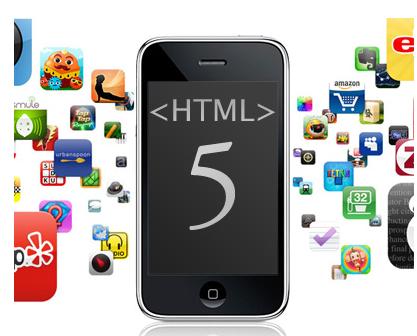Native Apps vs HTML5 Web Apps Mobile Applications
Developer of Mobile Apps are commonly
ask to develop the app which streams video, display the fluid
animation, play the music, integrate with the social media outlet
like the Twitter and the Facebook and device specific integration
capabilities. They are also worked with the developing the app that
can operate properly regardless of which devices, platform or the OS,
It is executing on. In the Multiple Cases, If the developers like to
get all such requirement, they have to leverage the numbers of
different technologies of the development and the environment in the
addition to the obtaining of multiple SDK's and learning new
scripting of language for the single OSs, causing the delay in the
deployment and the increase resource expenditure.
IF HTML5 which developer is
progressively getting as a remedy for the development pain and a way
to successfully navigates through the extremely mobile ecosystem
fragmented. Actually HTML is also the language of programming used to
present the internet content in the manner that is multiple device
usability. So the mostly latest version of the standard, HTML5,
activates cross devices compatibility by the allowing access to the
mobile content and the apps of Web through any type of internet
connected devices.
What do you mean by the Mobile
developer? They create one code now that is the cross device, cross
platform, cross OS and the Cross browser compatible. Such Advantage
like 'write once, run anywhere' make it so that developer can
mitigate the requirement to the write individual code for iOS, and
another specific to the Android ( And all it various OS version), and
other tailored for like blackberry, and much another for like …...
we get the points. This will greatly reduce the cost of the
development, Testing and the rolling for new apps and the websites.
 |
| Native Apps vs HTML5 Web Apps |
Mobile developer are starting to the
favor of HTML5 as the platform of development of the select for
multiple reason. Some use it because it allow the seamless
integration and the interactivity with the device of mobile and its
native's feature, providing the end user with a richer, more complex
user environment. For an example the developer are able to exploit
the device specific functionality such as the speaker, Camera,
accelerometer, microphone and the LBS technology. Another likes it
because it allow them to bypass the apps store approval processes.
Once developer create, test and finalize their web app, they can
deploy it simply through a url. After Deployment, They are able to
quickly edits the web app with the feature enhancement and the issue
resolve without having to go through an app store reapproval
processes which outcome in delay and the large expenses – and end
users can still access the updated web apps through the same URL. So
Instantly deployment and not user requiring to download and
installing the apps help to speed up time to market and the more
important, ROI.
Great debate is there related to the
development for native apps vs. HTML5 web apps. For the enterprises,
the benefit of the HTML5 web app far out weigh the limitation. Assume
such scenarios:
A company develop a native iPhone apps
for the CRM app. After month of the solid developing and the effort
of testing, they submit it to the sore of app for approval. After an
additional multiple months of the correspondence and the update
continuous to comply with the guidelines of Apple, The apps are
finally approved. Then the Apple update their SDK which developed
multiple bug, further delaying the CRM apps release. Concurrently,
the company realizes that the code which activates the iPhone to
interface with their core data had limitation which would take major
effort and the resource to the overcome, may be even requiring a
rebuild of the entire apps. And every time the enterprise wanted to
add new enhancement and the funcionalities. It become time consuming
and costly since they would urgently have to start the rigorous
testing and development effort from the scratches. Finally the apps
are approved, launched, available and is a big hit in the
streamlining business processes so now, customer and employee alike
are request Android and the Blackberry version of the CRM apps,
requiring more time and the resource.
Input the HTML5. Development the same
apps in the same environment would have produced a 'One – Size –
Fit -all' web apps which would work on the iPhone, iPad, Android,
Blackberry among other devices regardless of the operating system –
getting the feel and look of a native apps across all the platform.
With HTML5, Organization can quickly and easily development and
release feature enhancement and fix the bug issues while activating
customer to access the CRM apps as the usual – Through the URL.
Gone are the day of the apps store approval, delay, large expense and
resources commitment each time the organizations wanted to roll out
the new or the enhanced features or the issues resolved.
As enterprise organization evolve to
support more than one device platform compounded by the growing BYOD
trend, Along with the cost and the resources consideration,
development
employees and customers facing the
HTML5 web app seem to nbe the less prohibitive options in the native
apps vs. HTML5 web apps debate does not it?











No comments:
Post a Comment